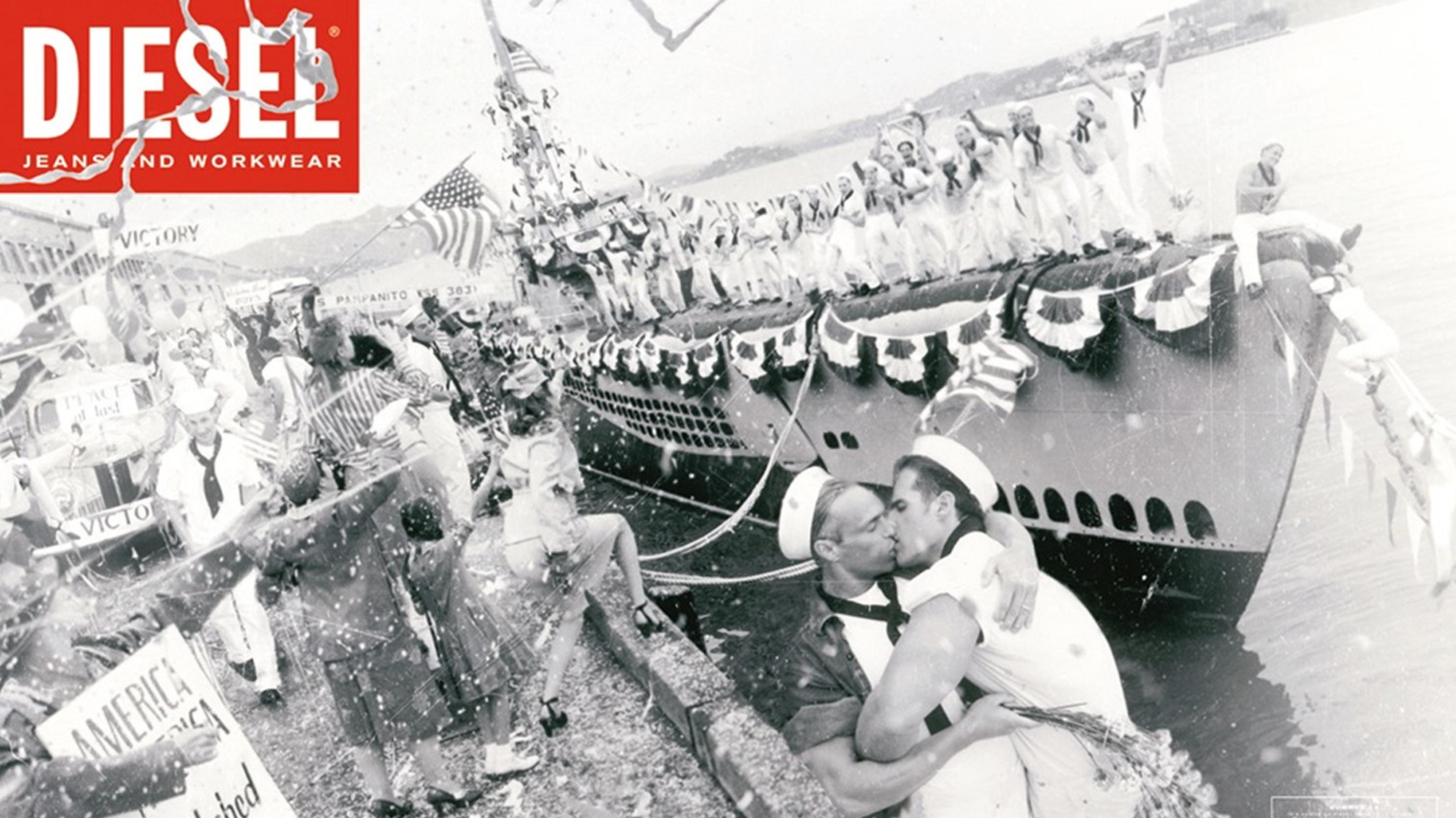Diesel advertisements 1991–2001
Finally It All Makes Sense

A new exhibition at Fotografiska of the world-famous, controversial advertising campaign for Diesel, including images by some of the world’s most prominent fashion photographers. What were they doing, Jocke Jonason and Johan Lindeberg, when they grabbed the marketing world by their you-know-whats – and turned everything on its head? Now it turns out that “it all made sense”…
The mission was to launch a new brand of jeans – Diesel
The choice of exhibition title brings an amused smile to the face of Jocke Jonason: Finally It All Makes Sense. A statement as much as a riddle. Just like the Diesel adverts which are the subject of the exhibition at Fotografiska. Adverts which still appear as fresh as they did 20 years ago when the first campaign kicked off, with pictures by some of the world’s most prominent fashion photographers such as David LaChapelle and Ellen von Unwerth.
The challenge seemed almost insurmountable: Levi’s had over 75% of the European market. The mission was to launch a new brand of jeans – Diesel. The commissioner was Renzo Rosso, founder and owner of the Italian jeans label Diesel, and the Swedish designer and marketing guru Johan Lindeberg accepted the challenge: He was going to position an Italian brand of jeans in the global market.
For Johan Lindeberg, who was the trendsetter par excellence, the choice was simple. Jocke Jonason at the advertising agency Paradiset would produce the adverts. And boy, did he do it! With absurd, crazy, “nonsense” texts, pictures and graphic solutions (which, as if by accident, included some item of denim). Instructions like “how to feed a dog” were mixed with images of black and white people bathing together in Sun City, South Africa’s horrid apartheid Mecca. The rest is not only advertising history but also an epic document of its time that generation after generation has a relationship to.
Now we know that which some had anticipated, many imagined, but no one knew for certain – Jocke Jonason’s choice of communication was founded on a fervent driving force. Behind and in between the lines and in the tonality of the images the driving force made itself felt, complete with a big grin and a burning heart for doing the opposite. Always. And in so doing he touched upon the innermost of something that no other commercial operator had a clue about. Jocke Jonason’s hunch was in fact linked to a collective subconscious vein that, on many levels, questioned the prevailing order – and that would prove to be a ditto of gold.
“Johan and I decided that each advert would only be used once and we never told anyone what we were doing. Hundreds of theses and studies have been written about the Diesel adverts but we never commented on the content...”
The exhibition presents the highlights of the campaigns
The result was an under-the-radar expression that captured something bubbling beneath the surface, something that was felt by the people who asked themselves if hysterical commercialism really was the meaning of life. It was like a half-crazy barricade demo without the barricade, which many people identified with, an expression that questioned so many things, perhaps everything, and also, miraculously, appealed to those who actually believed that super commercialism is the meaning of life, as, for example, the Italian fashion scene.
– At the first pitch meeting all of our 35 ideas were rejected out of hand. Then I showed them the last picture, of a beautiful blonde, a car tyre and a fun copy. He jumped at it: ‘This is Diesel!’ Renzo Rosso loves beautiful women and fast motorsports.
It was the beginning of a ten-year success story where Diesel and Paradiset demonstrated that visual communication with absurdist humour and a powerful social commitment can transform David into Goliath: That it was possible to break up the conservative monopoly with a vision similar to that of Obama’s “We Can Change” era. Unfortunately with the same end result: the conservative forces regain power.
– Advertising today is exactly as conformist and frivolous as when we started the Diesel campaign. And there is a greater need than ever for people who ask difficult questions and create space for discussion, Jocke Jonason says, without necessarily rubbing the politically correct up the right way.
The exhibition presents the highlights of the campaigns, some of which have become iconic. David LaChapelle, Ellen von Unwerth, Andrew McPhearson and Pierre Winther have all photographed for Diesel. One of the photographs that LaChapelle often singles out from his vast production, the kissing sailors in front of an American submarine, is from a Diesel commission based on one of Jocke Jonason’s ideas. A new generation of Swedish photographers were also given an opportunity to make their mark on the international stage: Peter Gherke, Henrik Halvarsson, Magnus Mårding, Calle Stoltz and Jörgen Lööf greatly contributed to the success. Also the films by directors such as Jörgen Lööf, Johan Camitz and Traktor/Ulf Johansson had a tremendous impact and the first of many Grand Prix awards in Cannes was in the category film.
A fun reason that the images seem so contemporary today has to do with body hair. Diesel had a predilection for employing an Argentine macho guy as model. The Paradiset team got tired of it. They wanted a more playful tone and put a false moustache and wig on him and – Voilá! – a most contemporary hipster, 20 years before everyone else!
A clear example of Jocke Jonason’s flair, tapping into our collective spring that runs through us all – finally it all makes sense. Or…?
PS. The Diesel adventure also paved the way for Swedish jeans rookies such as Acne and WeSC, where many of the front figures received their training from Johan Lindeberg, Jocke Jonason or… of course, Diesel. David continues to challenge Goliath.